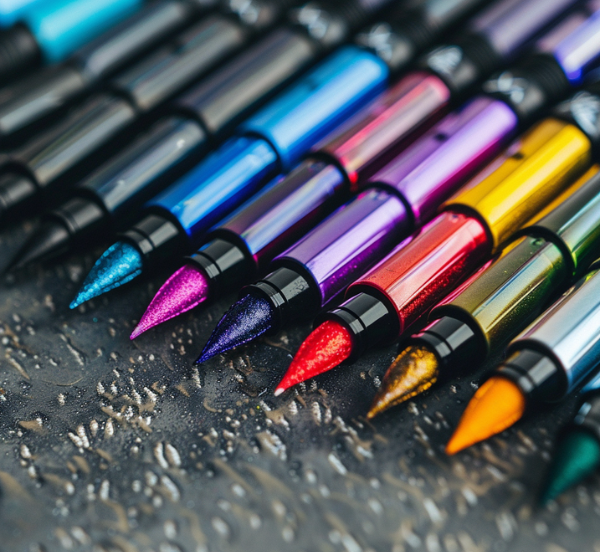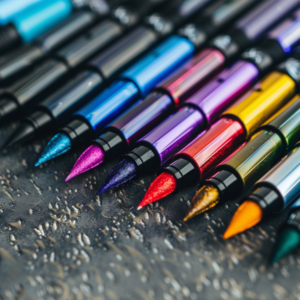Affordable Finds: 7 Calligraphy Supplies That Won’t Break the Bank
Calligraphy, the art of beautiful writing, has seen a resurgence in popularity in recent years. Whether you’re a seasoned calligrapher or just starting out, having the right tools can make all the difference in your practice. However, finding quality calligraphy supplies that fit within your budget can be a challenge. Fear not! I’ve curated a list of eight affordable calligraphy supplies that won’t break the bank.
7 Categories of Calligraphy Supplies
1. Fountain Pens
When it comes to calligraphy, fountain pens offer precision and control. Look for affordable options like the Pilot Metropolitan or the LAMY Safari. These pens provide smooth ink flow and come with interchangeable nibs, allowing you to experiment with different line widths. Remember to choose a fountain pen that feels comfortable in your hand and suits your writing style.
2. Brush Pens
Brush pens are perfect for creating bold, expressive strokes in calligraphy. Opt for budget-friendly options such as the Pentel Fude Touch Sign Pen or the Tombow Fudenosuke Brush Pen. These pens come in various tip sizes, making them versatile for different lettering styles. Unlike fountain pens, brush pens have flexible tips that allow for varying line thickness with pressure, giving your writing dynamic flair.
3. Calligraphy Paper
Good quality paper is essential for practicing calligraphy. Look for smooth, heavyweight paper that won’t bleed or feather when you apply ink. Budget-friendly options include Rhodia pads or Canson Marker Paper. Investing in proper paper ensures that your ink will glide smoothly across the surface, resulting in clean, crisp lettering.
4. Ink
Choosing the right ink is crucial for achieving desired results in calligraphy. Opt for waterproof and fade-resistant inks that are compatible with your chosen writing tools. Affordable options include Higgins Eternal Black Ink or Winsor & Newton Calligraphy Ink. These inks provide rich, vibrant colors and excellent flow, making them ideal for both beginners and experienced calligraphers alike.
5. Nibs
Nibs come in various shapes and sizes, each producing unique line variations in calligraphy. For affordable nib options, consider brands like Speedball or Manuscript. Whether you prefer broad-edged nibs for traditional scripts or pointed nibs for modern styles, there are plenty of budget-friendly options available to suit your needs.
6. Practice Pads
Practice makes perfect in calligraphy, and having a dedicated practice pad can significantly improve your skills. Look for affordable options like the Canson XL Marker Pad or the Strathmore Tracing Paper Pad. These pads provide smooth surfaces for practicing letterforms and strokes, helping you develop consistency and precision in your writing.
7. Calligraphy Kits
If you’re just starting with calligraphy, investing in a beginner’s kit can save you time and money. Look for kits that include essential tools like pens, ink, paper, and instructional guides. Affordable options include the Speedball Calligraphy Starter Kit or the Manuscript Deluxe Calligraphy Set. These kits provide everything you need to get started on your calligraphy journey without breaking the bank.
Conclusion
In conclusion, you don’t need to spend a fortune to pursue your passion for calligraphy. By choosing affordable yet quality supplies, you can enhance your writing experience without draining your wallet. Whether you’re a hobbyist or a professional, these budget-friendly options are sure to elevate your calligraphy practice.
FAQs:
1. Can I use regular pens for calligraphy?
While you can technically use regular pens for calligraphy, fountain pens and brush pens are better suited for the art due to their specialized nibs and ink flow.
2. How do I choose the right nib size for calligraphy?
The right nib size depends on the style and size of lettering you wish to achieve. Experiment with different nib sizes to find the one that best suits your preferences.
3. Is calligraphy difficult to learn?
Like any skill, calligraphy requires practice and patience. With dedication and the right resources, anyone can learn to create beautiful lettering.
4. Can I use any paper for calligraphy?
While you can technically use any paper for calligraphy, using smooth, heavyweight paper specifically designed for the art will yield the best results.
5. How often should I practice calligraphy?
Consistent practice is key to improving your calligraphy skills. Aim to practice for at least a few minutes every day to see steady progress over time.







